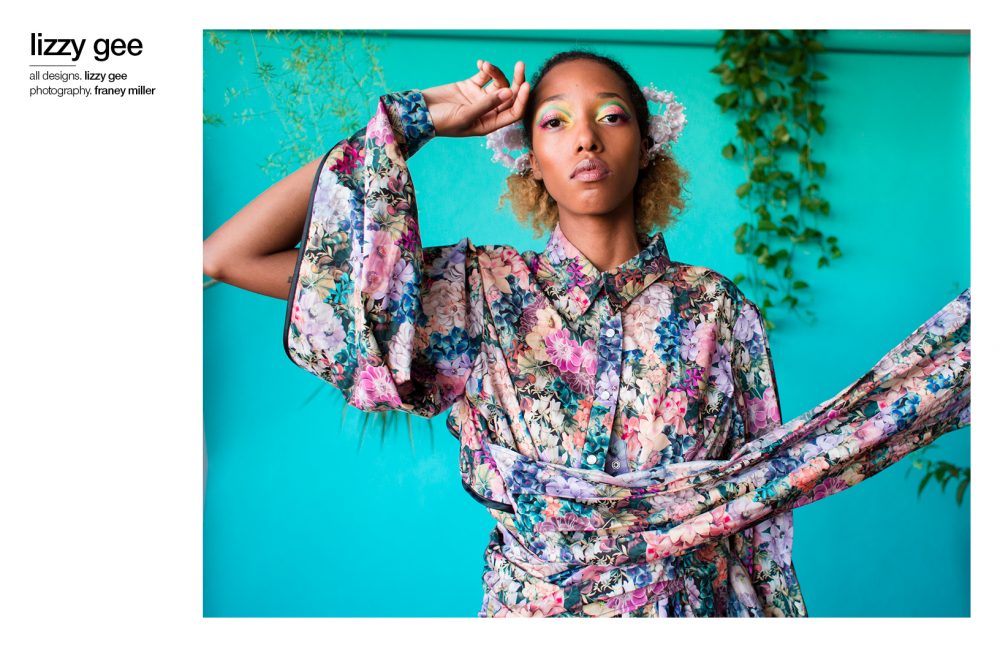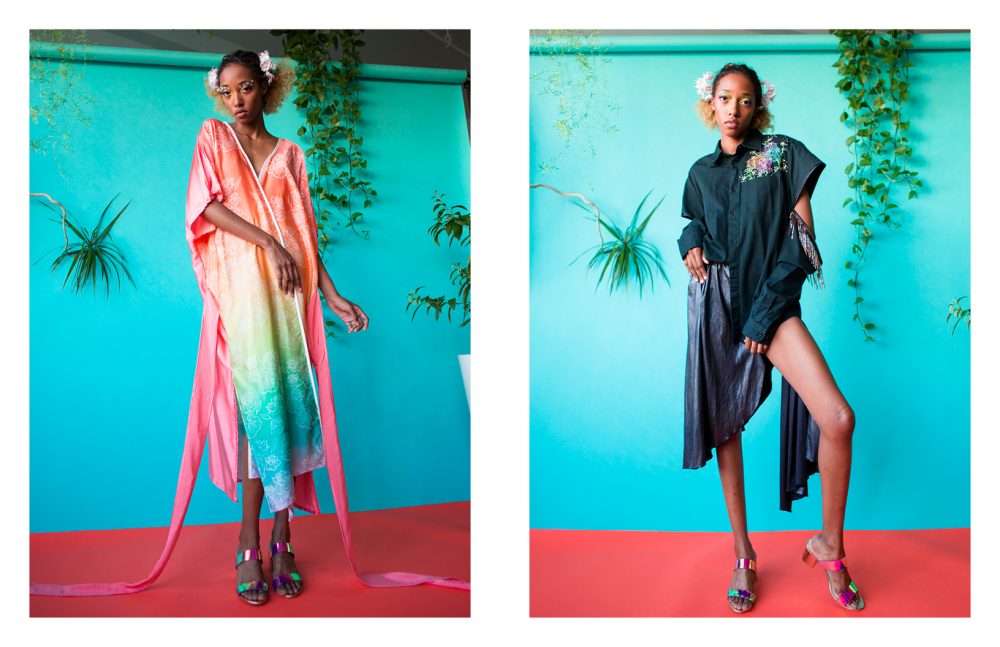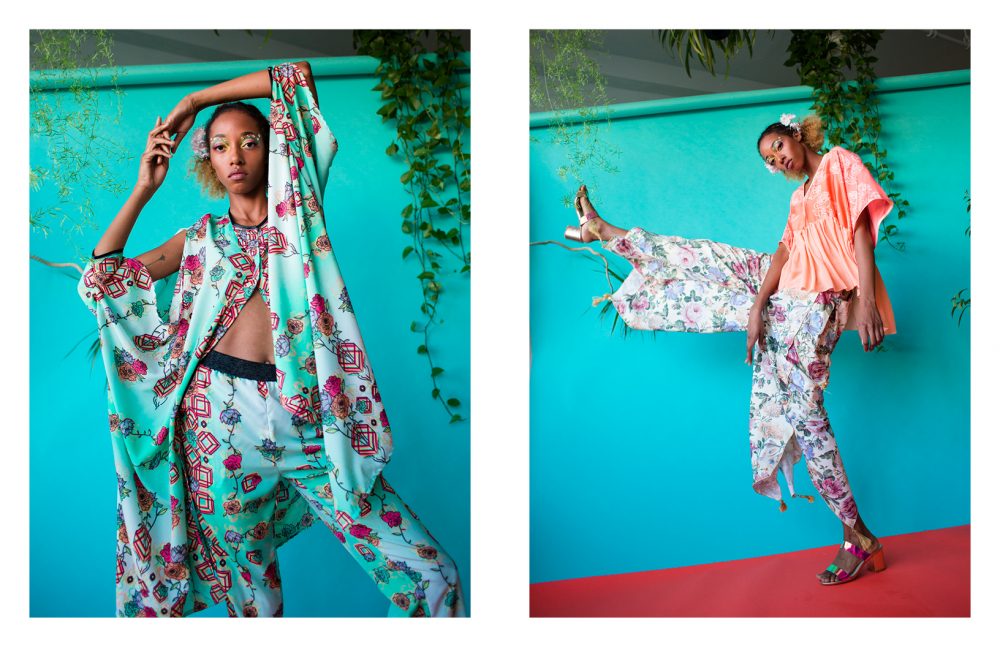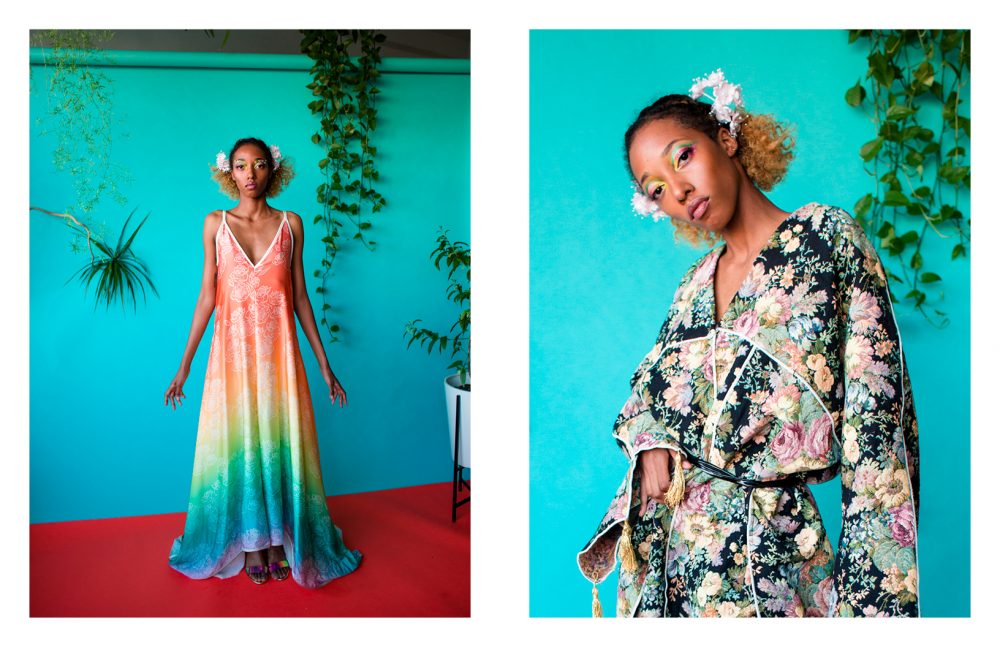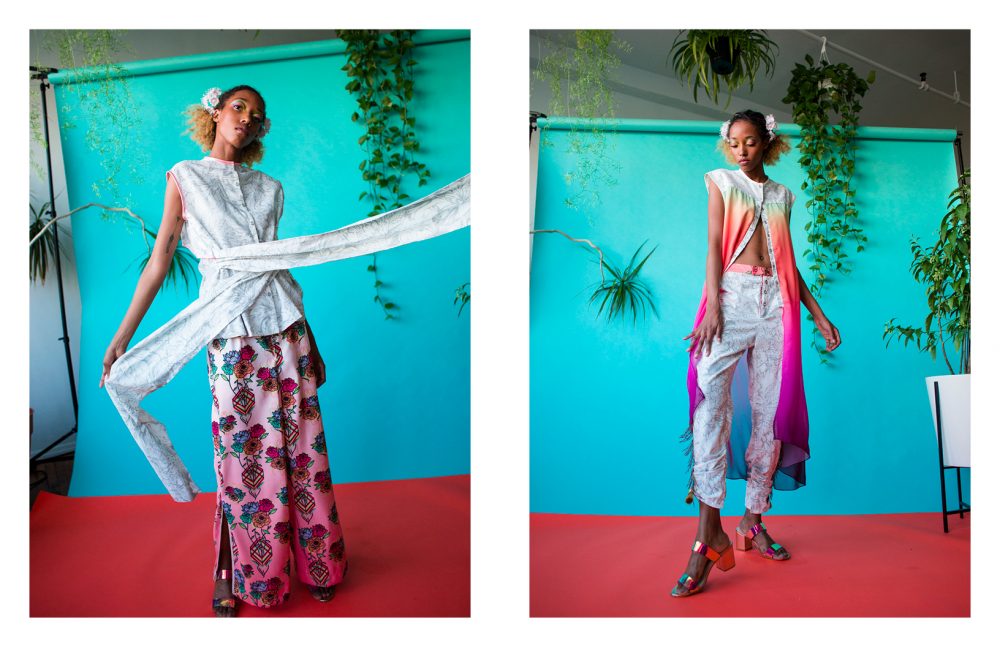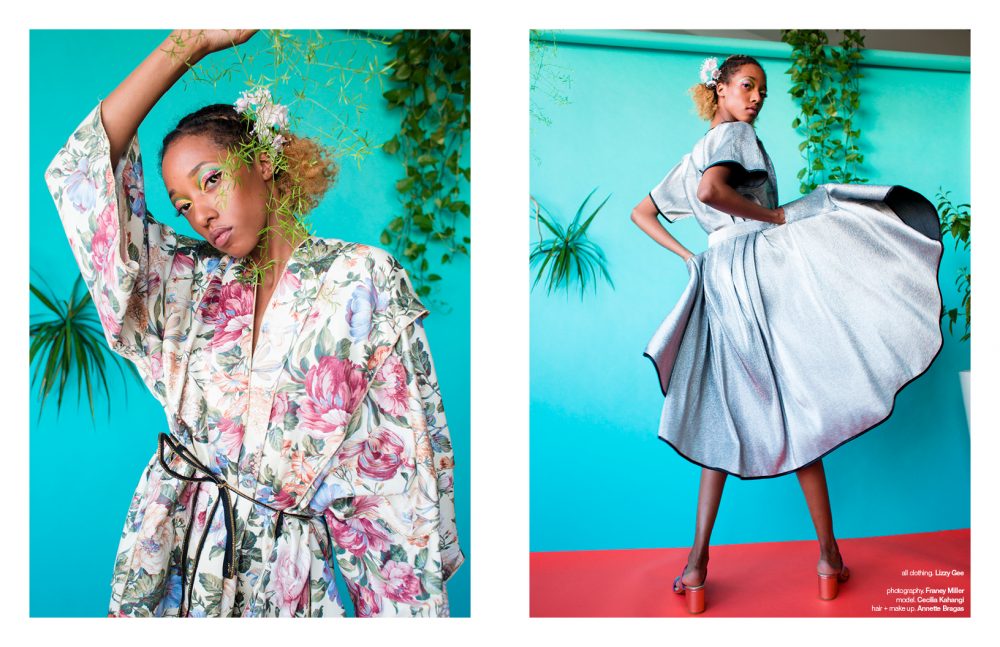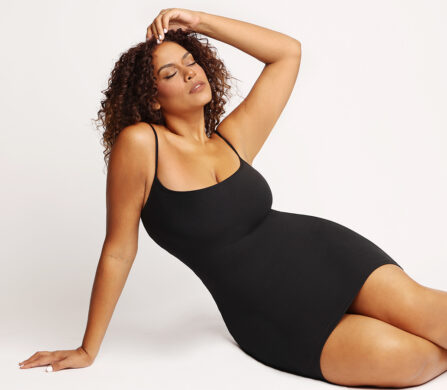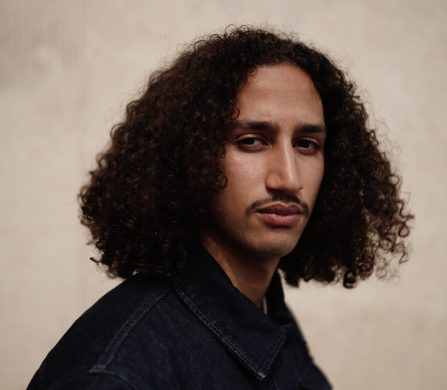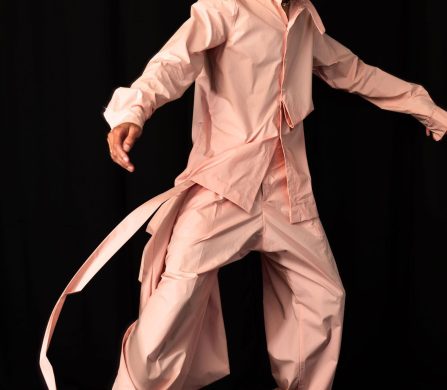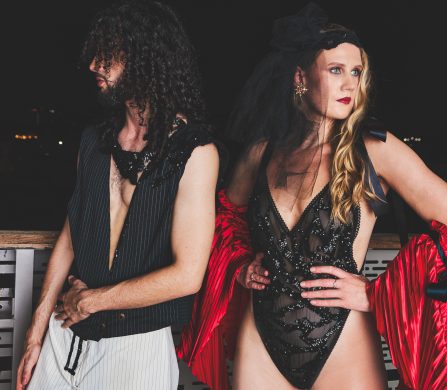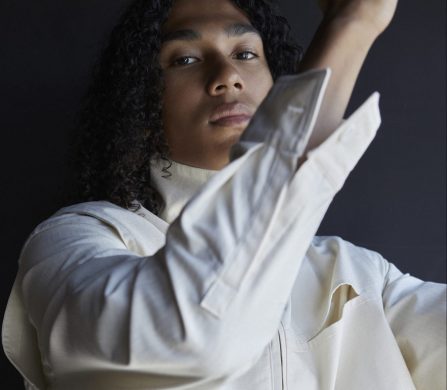Designer Lizzy Gee is here to change the face of fashion. Born and bred in Philadelphia, Gee has developed her creativity since childhood but she fell in love with fashion when she learned how to sew aged only 11. Since then, the designer has finely developed her skills to leave her mark in the fashion world. She trained at Pratt Institute and made her move to NYC shortly after her graduation. It was there in 2018 where her own brand, Lizzy Gee LLC, was born. Designing from a small studio in Brooklyn, merely a year after its genesis, Gee’s designs are ready to go global.
With inclusivity as her main guiding force, Gee creates genderless and timeless fashion. Her approach mixes equal parts romanticism and usability resulting in transformative — and transformable — pieces that suit and cater to everyone’s needs. Sustainability is also a prime concern in Gee’s approach as the designer prides herself in using zero-waste patterning, eco-friendly dyes and upcycled, recycled or deadstock textiles to execute her designs.
Picking up from her debut collection “A Vibrant End” — which she showcased in New York and London — Gee now presents her SS20 collection, “Bloom For Yourself.” Tackling themes of self-love and acceptance, the collection debuted at IMPACT NYFW, Gee’s own annual New York Fashion Week initiative providing a space for sustainable designers to showcase — the revenue from the event’s tickets going to various environmental causes.
Here, Schön! catches up with the designer to discuss her journey into fashion, her environmentally-safe approach to fashion, and what the future of her brand looks like.
You learned how to sew at age 11. What drew you to fashion in the first place? And how did that interest develop over time?
Before I knew the term fashion or that I could pursue it as a career, I had the drive to invent. When I was five or so I went into my grandma’s crafting bin and found a bunch of ribbons. I used a stapler to attach all the different coloured pieces and wanted it to decorate a shirt to wear to school. Another time I was playing with my Barbie doll and when changing her outfit realised that she had no underwear. This concerned me. She needed to be comfortable so I asked my grandma to make her some. No one in my family knew how to sew so as soon as I was old enough they took me to lessons after school. I discovered fashion at the school I went to, called The Handwork Studio. There I developed a confidence in using sewing to express myself — make the world more colourful and inclusive. I also hated shopping for clothes since I could never find the right size and settling for whatever fit forced a perspective on who I was that was not true. Learning to sew enabled me to change that. Very early on I realised I wanted to keep creating the rest of my life.
Why did you decide to formally study fashion at Pratt Institute? Was this something you always had in mind?
Studying at Pratt was not always the plan. I wondered if it was smart to study fashion for college at all. I had already been sewing and making designs for seven years beforehand — not the technically correct way but my design came out in the end all the same. No one close to me had tried to pursue anything like it and I was good at academics. It wasn’t until midway through high school I decided to go for it and not subject my dream to being a hobby. Even then I took pre-college courses at Parsons and FIT. It wasn’t until applying to college when I discovered Pratt and even then I didn’t know much about it. But when I went to visit their campus and see the department is when I made the decision to go. Their program wasn’t as large as FIT but Pratt’s curriculum gave me the ability to design more inclusively whereas FIT would make me pick a speciality. Even then I knew I wanted my concepts to transcend gender and size because emotions have always done that. Demographics don’t determine personality or empathy.
What did you learn with your move from Philadelphia to NYC?
I learned the realities of pursuing fashion design. Philly had fabric row and a handful of brands headquartered there but nowhere near the scale of NYC. I was surrounded by people who had the same aspirations and had their own perspectives on fashion. It only pushed me more. Any rejections and misunderstandings I received helped me to better understand how I can visually communicate. I grew an appreciation for people in the industry who had different aesthetics and when they occasionally took a liking to a design of mine or understood it, it excited me. By moving to NYC my perspective of fashion grew immensely.
When and how did the decision to start your own brand come about? Was there a specific moment that spurred it?
As soon as I could sew I knew I wanted to keep creating my own designs and have a future creating for others. People would describe my designs as “very Lizzy” or that it was in its own world. And I definitely loved other designers work but not so entirely that that was enough. I had no idea what starting a brand would entail or how to go about it. The motivation to keep creating is what spurred the goal to create a future where that could continue.
How would you describe your approach to fashion? What does fashion mean to you?
At the core, I use fashion to connect people or transform them into who they want to be. We all love and hurt and find our own slices of happiness. If a dress I design helps someone of any pronoun with their slice of happiness then I served my purpose. Fashion is a visual metamorphosis of us. I also see fashion as a reflection of society and its values, which is why I make such a point to incorporate as many sustainable practices as possible. Fashion is the second dirtiest industry right behind oil.
Apart from its bigger repercussions, do you see fashion as an outlet to express yourself also?
Always. I am such a visual person. Words can only go so far whereas an image can evoke a thousand words plus indescribable emotion. I can involve my other interests as well such as music, drawing, metalworking, and sociology either through concepts, textile development or runway production. There are so many elements that can go into the process so no matter what headspace I’m in I am able to use it as an outlet.
Your creations challenge the notions of masculinity and femininity while drawing on female empowerment and creating genderless pieces. Why did you pick these as your core beliefs?
Because people are not binary, why force my clothes to be one or the other? A dress I make could make a man feel just as sexy and beautiful as a woman would wearing it. A lot of people have a hard time taking anything feminine seriously such as the colour pink or any outfit that includes a skirt — especially if the outfit is worn by a man. If women can be seen as powerful by wearing pants then a man can be for wearing skirts. These learned stereotypes shove people in boxes rather than allow them to flourish into who they are. At the end of the day, I see it as a more artistic possibility.
How would you describe the style of clothes you create? What about your ideal client?
My style blends romantic silhouettes, edgy composition, and bold textiles. I design for a personality rather than a demographic so my ideal client is anyone who feels like rocking a rainbow jumpsuit or upcycled leather jacket with pink topstitching.
If you had the chance to dress anyone, who would it be?
It’s hard to pick one. I would have to roll the dice between Lady Gaga, Lizzo or Harry Styles. They all are amazing artists who’ve influenced me.
What was the inspiration for your SS20 collection, “Bloom For Yourself”? Can you give us a bit of background as to how the collection came about? How did you come up with the title and what does it mean to you?
While in fashion school I was constantly advised to not be so colourful and not to be so floral with my print designs so I devoted a collection to bringing power back to the flower. I could see why they advised it but I did not agree. Flowers have evoked so many metaphors for us. My all-time favourite is that people can “blossom” or “bloom.” But an even more powerful statement is that you bloom for no one else but yourself because you are worth it. The title is a shortening of that. This collection is about learning to love yourself, that you are a flower unlike any other so if you don’t bloom as quickly or in the colours people expect you to that’s okay. Every type of flower holds beauty.
How do you feel this collection picks up from your debut “A Vibrant End”?
“A Vibrant End” was my senior thesis at Pratt. It went through many stages and was critiqued by many people. Those critiques pushed me out of my comfort zone. I am proud of what it became but as a reaction to those past critiques, it was so much fun to create a collection by following my gut alone. I went more feminine and I can honestly say I think a man and woman look great in each outfit. While creating the last collection I wasn’t as sure of myself.
Why did you decide to tackle themes of self-love and acceptance? Why now?
These themes are universal and something everyone struggles with to a degree. I struggle with it. Many of my friends struggle with it. It’s extremely hard for me to accept a compliment. I thank the person but do I believe them? The last couple of years have moved by faster than the rest and so much has changed yet I still can’t take a compliment very well or stop myself from making self-deprecating jokes. What better way to work out inner turmoil than to create a collection trying to counteract it?
The collection debuted at IMPACT NYFW, which is your own initiative. How was that experience?
Absolutely insane but in the best way possible. I produced the show as well as debuted my SS20 collection with the help of some amazingly supportive friends and family. I titled the show impact and it made more of an impact than even I could’ve imagined. It gave emerging, sustainable designers a platform to grow from, raised awareness to consumers, and donated the ticket proceeds to a great environmental cause.
Apart from featuring sustainable materials — like upcycled or repurposed fabrics — the collection features many multi-purpose, transformable pieces. How did you come up with that idea? Where did you get your inspiration for it?
A flower is transformable, growing into various sizes and shapes so I designed garments that can do the same. Also, by being multi-purpose hopefully for the consumer this will extend the wearability.
Your brand also has a strong focus on sustainability. How important is that for yourself and in what ways do you hope to develop these practices further in the future?
It is extremely important. We’re at a point environmentally where we have to be conscious of our footprint. So much of the industry is non-transparent about the unethical practices that take place for the sake of luxury. It’s progressing though and my brand will with it. I will continue to experiment and learn how to more efficiently use the practices I’ve already incorporated while adopting new ones. My next step involves a made-to-order system so that I only use exactly what is in demand rather than supply assuming the demand will be there.
How does the photo series reflect the collection’s ethos? How did you select the team of women to work with?
The photo series shows the transformative nature of the designs. I wanted it to be a person showing a vulnerability along with confidence — the model, Cecilia, did a great job at balancing that. I selected the team of women based on either that they’ve supported my past work or had a similar perspective/knew how to work with colour. It was a really great team that ended up coming together. We had a great time working on the series.
Where do you see your brand going forward in the future? Do you have anything on your bucket list?
My plan right now is to implement my made-to-order designs and with each collection expand my retail potential so more designs can be available. I’d love to keep building up my IMPACT NYFW show as well as showing my collections in a different city like Paris or Milan. I’m very thankful I checked off a lot on my list this past year. Overall, I want to be able to not only create sustainable designs but be able to sustain a business based off of that.
Discover more about Lizzy Gee on the brand’s website and make sure to follow Gee and IMPACT NYFW on Instagram.
all clothing. Lizzy Gee
photography. Franey Miller
model. Cecilia Kahangi
hair + make up. Annette Bragas












